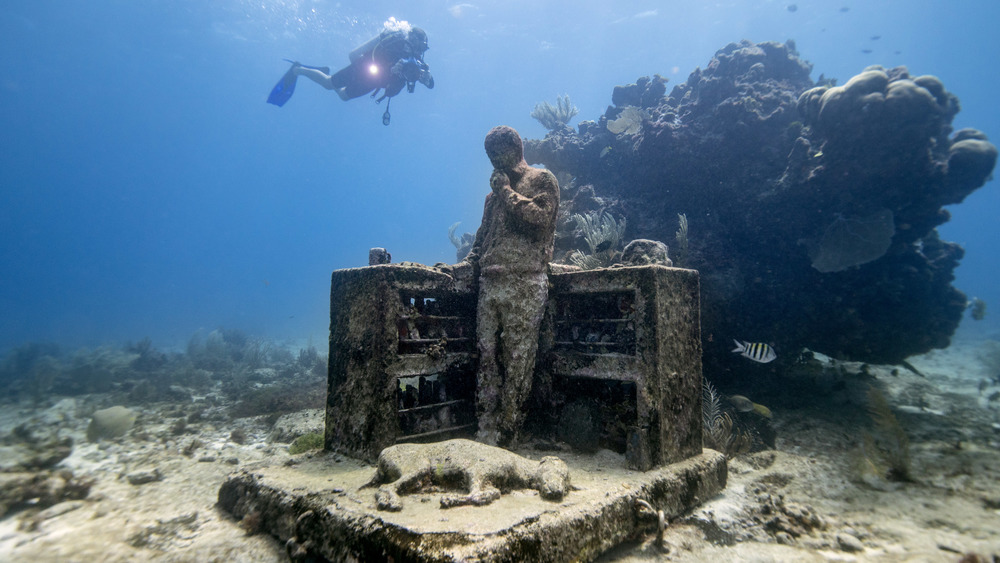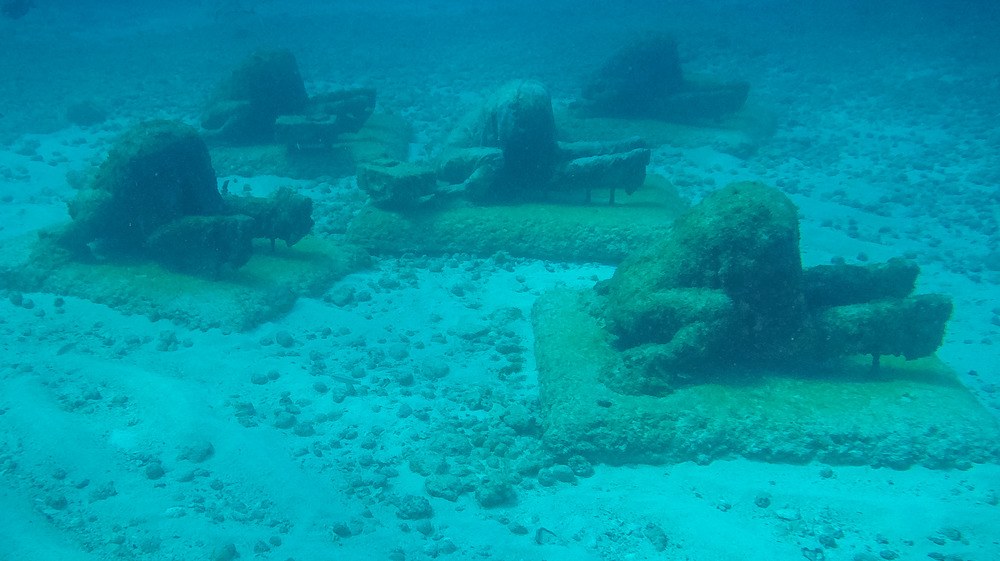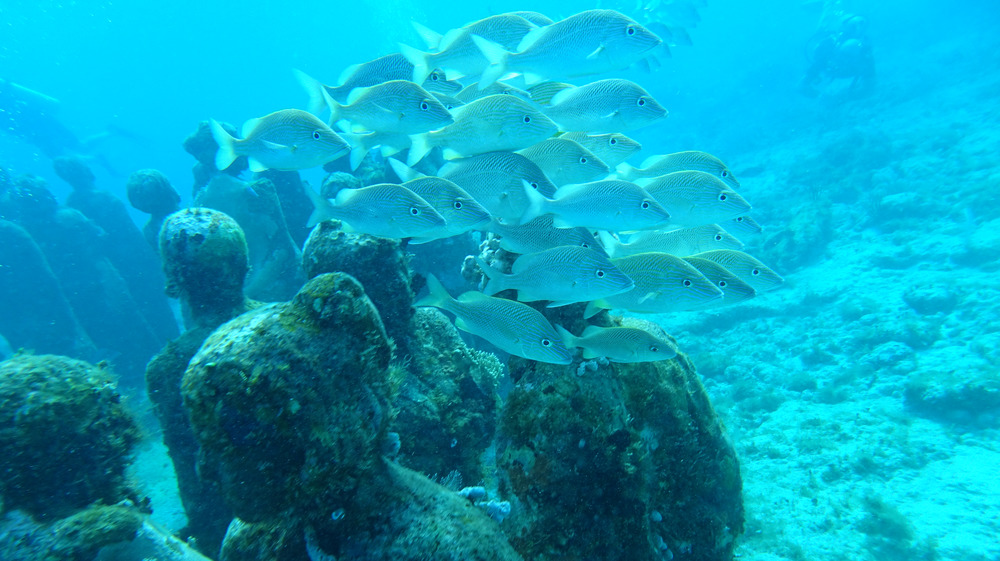The Caribbean Art Exhibit You Need Diving Equipment To Visit
The world is full of ancient mysteries, monuments, and even entire cities that ignite the imagination and defy easy explanations. The Nazca lines in Peru (per National Geographic), the world's 11,000-year old "first temple," Gobekli Tepe, in Turkey (per Smithsonian Magazine), the underwater pyramid of the "Japanese Atlantis," Yonaguni Monument (per National Geographic): These are but a few examples of locations that seem remote and bygone enough as to be practically alien. Indeed, this might be part of the reason why alternative historians call foul on our accepted archaeological records, such as Mr. "It was Aliens" himself, Giorgio Tsoukalos, on the History channel's Ancient Aliens.
What if, amid all the practicalities of architecture — costs, building materials, form vs. function, and so on — some ancient sites' design choices were purely aesthetic? How about the petroglyph-inscribed pukao (hats) on the heads of the moai on Rapa Nui, in the West referred to as "Easter Island"? Can't ancient builders just have liked how things looked? Isn't that "art for art's sake," as aesthetes like Oscar Wilde would say (per Britannica)? Or put differently: Why sacrifice aesthetics for substance when you can have both?
Enter MUSA Cancun: an underwater art exhibit that looks like it would be an ancient, mysterious site, if only weren't a mere decade-old installation. Having grown at the hands of artists from its first four sculptures in 2009 to an entire, submerged museum of over 500 mostly humanoid figures, per Aquaworld, MUSA Cancun is a truly staggering sight and testament to craftsmanship.
Ecologically-themed sculptures sculpted by the ocean into an artificial reef
Inheritance, where a small child sits and stares at a heap of random trash. Resurrection, an image of a woman taking flight on wings composed of leaves (per Aquaworld). The Banker, featuring a cluster of suited men with their heads literally stuffed into the sand of the ocean bed, briefcases within arm's reach. Anthropocene (the era of history where humans have greatly impacted ecology), where a person lounges on the hood of a car.
These are but a few examples of the sculptures on hand at MUSA (Museo Subacuático de Arte, or "Underwater Museum of Art") Cancun. Many sculptures are environmentally themed, rightfully so, as their surfaces have been consumed by coral, tube worms, and other flora that have reignited the underwater ecology to the point of creating artificial reefs to offset some of the disastrous damage done to the ocean by human activity. Over time, the sculptures morph from an original, pristine white to something wholly marine. In the words of Artistic Director Jason deCaires Taylor, "As soon as we sink them, they belong to the sea."
Such words become especially profound considering that each sculpture is modeled after an actual person. MUSA of the Ocean was designed after an artist's aunt, for example, while local fisherman "Charlie Brown" posed for the piece Silent Evolution.
A future ancient site of mystery currently open to the public
The inspiration for MUSA is as surprisingly novel as it is simple. As Taylor said, "MUSA's sculpture collection is to us humans as exploring aquarium decorations is to fish," (per Museeum). To that end, visitors can strap on a wetsuit and snag scuba gear to explore the Manchones exhibit off the coast of Isla de Mujeres, at 8-10 meters deep. Or, they can grab snorkeling gear for the shallower, two-to-four-meters deep exhibit at Punta Nizuc off the coast of Cancun. Or, folks can swim with the fishes around the final exhibit at Punta Sam, also off the coast of Cancun, but a bit more northeast. Aside from Director Taylor, the works of other artists such as Karen Salinas Martinez, Roberto Diaz Abraham, Rodrigo Quiñones Reyes, Salvador Quiroz Ennis, and Elier Amado Gil are all on display.
And if you think this all sounds unfeasibly difficult to access, have no fear: there are numerous affordable guided tours, such as those on Dive Booker or Trip Advisor. Other sites, like Aha Scuba Diving, incorporate lessons into their tours, to certify beginners and let them experience the totality of the museum. Alternatively, people can take glass-bottomed boat tours such as those on Tiqets.
Who knows? In the far-flung future, MUSA Cancun might just be discovered by humans who wonder whether or not it, too, was created by aliens.


